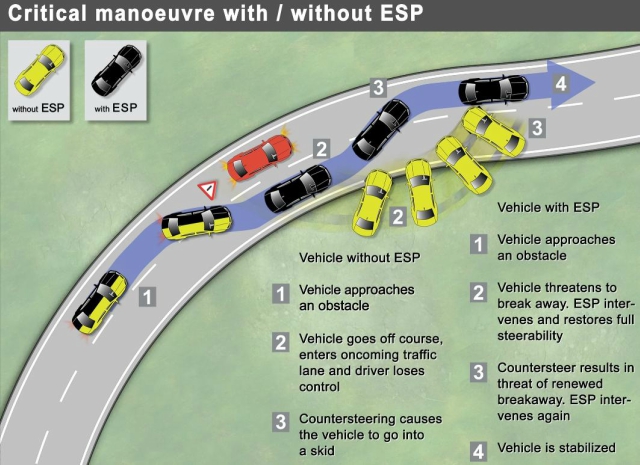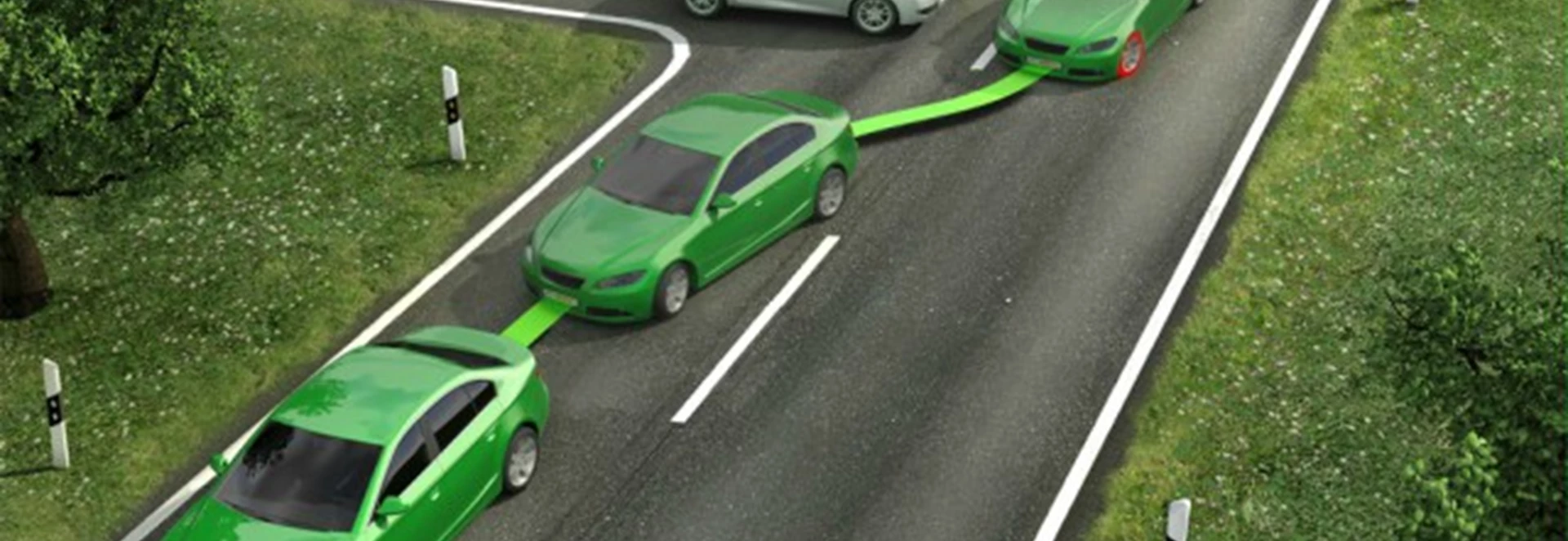ESP is something which virtually all new cars on the market nowadays include as standard to help keep drivers safe. In this guide, we explain what ESP is and how it works.
What does ESP stand for in a car?
ESP in cars stands for Electronic Stability Program, which is considered one of the most important safety systems which exists in cars.
It is alternatively known as Electronic Stability Control (or ESC for short). Other alternative terms sometimes used include Electronic Stabilisation Program, Vehicle Dynamic Control (VDC), Vehicle Stability Assist (VSA) and Dynamic Stability Control (DSC).
How ESP works
ESP is basically a term that refers to a collection of driving safety systems which all work towards keeping a car on the road in a controlled manner. These systems include traction control (TCS) and anti-lock brakes (ABS).
When you’re driving a car, your control inputs, which includes use of the wheel and pedals, is monitored by sensors which send data to a central computer. This computer compares what you’re doing with how the car is responding.
So if, for example, you are steering right but the car is continuing to move straight ahead, the computer can instruct the onboard safety systems to assist with this issue. If your braking hard and there’s a risk of locking up the wheels due to low grip on the road, the computer can instruct the anti-lock braking system to kick in.

Another way it can help is if you accelerate hard on a wet or icy road and your driven wheels begin to spin. ESP can instruct the traction control to control acceleration in a way that will keep the car moving without any spinning of the wheels.
The whole process of the ESP detecting trouble with your car and using other safety systems to assist with driving happens in mere fractions of a second.
Cars with ESP
Because of legal reasons, ESP is a standard safety feature of every single vehicle you can find within the new car market.
Having ESP in cars has been a mandatory requirement under EU law since 2014. Older road cars which do not have ESP are still allowed on the road. However, past research has shown that having ESP on a car can reduce the chance of being in a fatal crash by 25 per cent.
Electronic stability control vs traction control
Some motorists incorrectly believe that the stability control system is either exactly the same as traction control or you can only have one or the other in a car. In reality, the vast majority of cars around include both electronic stability control and traction control.
Because of their respective roles, traction control is nowadays usually considered a secondary function of stability control. While traction control focuses on one specific goal, ESP manages numerous systems at once to help keep drivers safe behind the wheel during trickier driving situations.




